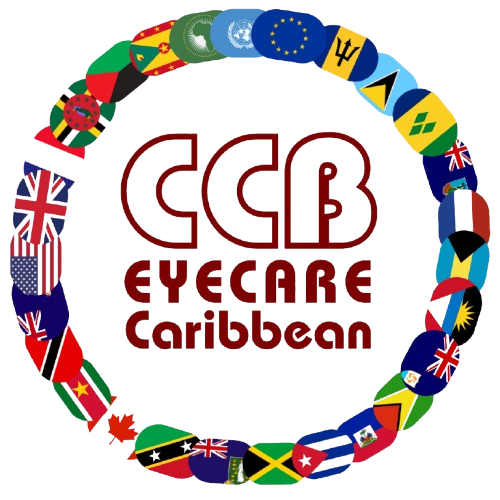The programmes in Jamaica, Trinidad, and Guyana have been in progress for a number of years and have brought about a quantitative and qualitative change to access to education for children with visual impairment. However, the focus now should also shift to the issues of quality and how interventions could be designed to best suit the needs of individual children with visual impairment (child focused strategy).
The assessment shows the coverage variance from 21-60% in three countries. An identification mechanism needs to be put in place to further identify and enroll the children with VI. There is a bias towards male child and this need to be addressed so that more girls are identified and enrolled in the programme. Male to female ratio is imbalanced and there is a need to put a mechanism in place to identify and enroll more girls in the programme. Another important finding is the percentage of children with additional disabilities in the programme (Jamaica 17%, Trinidad 12.5%, and Guyana 23%) which is reasonably good but this could still pose an additional challenge and may require some capacity to support these children.
The findings from Jamaica assessment indicate that the predominant cause of visual impairment in this sample was children with retinal disorders. The percentage of children with VI due to Glaucoma was substantially high. On presentation, 67.40% were either blind or severe visual impaired, while 16.9% had moderate low vision. After correction, there was a slight shift noticed where the percentage of blind/SVI reduced from 67.40% to 58.40%,where those who improved with correction shifted from the previous to the low vision category which increased to 25.8% from 16.9%. On presentation, 25 children could not read normal print (newspaper print; N8), after correction 18 could read N8 with the help of spectacles and magnifiers. About 23% had moderate to severe contrast sensitivity loss, while 10.1% had difficulty in recognizing basic colours. This should be factored into their curriculum design especially where drawings, pictures and diagrams are concerned and ergonomics should be given due attention.
The findings from Trinidad assessment show that the predominant cause of visual impairment in this sample was children with retinal disorders (33.9%). On presentation, 58.90% were either blind or severe visual impaired, while 19.6% had low vision. After correction, there was a slight shift noticed where the percentage of blind/SVI reduced from 58.90% to 48.30%, where those who improved with correction shifted from the previous to the low vision category which increased to 19.6% from 28.6%. On presentation, 17 children could not read N8 print (newspapers, books etc) while the remaining 22 could read N8 print either unaided or with there existing spectacle., after correction the percentage of children who can’t see 1M reduced from 30.36% to 23.21%. About 23.3% had moderate to severe contrast sensitivity loss. This should be factored into their curriculum design especially where drawings, pictures and diagrams are concerned and ergonomics should be given due attention. 9% had significant constriction in their visual fields and could benefit from orientation and mobility training.
The findings from Guyana assessment indicate that the predominant cause (34.6%) of visual impairment in this sample was children with lens related disorders. On presentation, 38.5% of the children were found to be blind. 1.5% had severe visual impairment while a significant number (27%) had low vision. No classification shift was noted with prescription of best correction except a small increase in the number of normal sighted from low vision. On examination, 10 children could not read N8 print (newspapers, books etc) while the remaining 8 could read N8 print either unaided or with there existing spectacle. No significant change in the reading ability was noted with the prescription of new spectacles. About 34.60% had moderate to severe contrast sensitivity loss. This should be factored into their curriculum design especially where drawings, pictures and diagrams are concerned and ergonomics should be given due attention.
The assessment showed that low vision services are not available in the Jamaica and Trinidad and availability of LVDs is limited. Few donated second-hand hand held magnifiers was all that was available at the Salvation Army School for the Blind while a small inventory of devices is maintained at the headquarters of Jamaica Association of the Blind. In Trinidad, we found no evidence of any availability of devices except in one case where a child had got a telescope and magnifier from USA. A low vision clinic is functional in George Town, Guyana, however, the number of children who had undergone assessment and prescription of LVDs in this clinic is very low. No systematic programme is in place for referral of children from education to clinical services or vise-a versa.
One of the main constraints in delivering effective services to the children is unavailability of clinically trained personnel who could prescribe LVDs. This is due to unavailability of optometry cadre in the public sector and lack of interest in LV services by the private sector. Most of the teachers have undergone special needs training however; this training is weak where working with children with LV is concerned.
Cognitive Assessment
Cognitive assessments are used to measure student achievement and prerequisites for academic advancement. Successful completion of such assessments is absolutely key to a student’s education. Personnel responsible for the administration of such assessments should possess more knowledge of the educational needs of students with VI. As discussed earlier, there is a need for further refinement and fine-tuning of cognitive assessment tool. The text was developed according to children’s intellectual and educational level and results provides an insight of the strengths and weaknesses of the cognitive profiles of the sample and factors which influence their performance. As a result, the teaching mechanism can be reviewed and revised according to the need of the children.
RECOMMENDATIONS:
